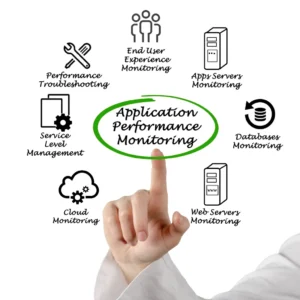
Hyperautomation: Revolutionizing BPM with AI-Powered Efficiency
Understanding Hyperautomation: A Leap Beyond Automation
In the digital age, automation has become the cornerstone of operational efficiency. But hyper-automation transcends conventional automation. It encompasses a comprehensive approach integrating advanced technologies like artificial intelligence, machine learning, and robotic process automation (RPA) to amplify the entire business process lifecycle.
By automating routine tasks and decision-making processes, hyper-automation paves the way for unprecedented efficiency gains.
Table of Contents

Arindam Roy
An Automation Consultant with 25+ years of IT Experience
AI-Driven Process Orchestration: The Symphony of Precision
At the heart of hyper-automation lies AI-driven process orchestration. Imagine a symphony where AI algorithms harmoniously conduct intricate processes. This level of orchestration empowers organizations to optimize resource allocation, streamline workflows, and adapt dynamically to changing scenarios.
The result? A seamless, efficient, and intelligent business ecosystem.
Unveiling the Differences: IBPMS, RPA, IPA, and Hyperautomation
As someone familiar with technological terms, you may have heard of Intelligent Business Process Management Systems (IBPMS), Robotic Process Automation (RPA), and Intelligent Process Automation (IPA).
These concepts have been around for a while and have been used to enhance process visibility, automate repetitive tasks, and combine AI with automation. However, a new term has been gaining popularity lately – hyper-automation.
This term refers to the grand convergence of IBPMS, RPA, and IPA, transcending their limitations to create a holistic and transformative solution. With hyper-automation, businesses can achieve higher efficiency, accuracy, and collaboration, ultimately leading to tremendous success.
Benefits Galore: The Hyperautomation Advantage
The rewards of embracing hyper-automation are both immediate and enduring. The advantages are clear, from reduced error rates and enhanced operational speed to data-driven insights for informed decision-making.
By enabling employees to focus on value-added tasks, businesses can unlock unprecedented innovation potential and cultivate a culture of continuous improvement.
Hyperautomation in Action: Inspiring Examples
- Customer Service Excellence: Chatbots using natural language processing handle customer queries, resolving issues swiftly and ensuring 24/7 availability.
- Supply Chain Optimization: AI algorithms predict demand, optimize inventory levels, and facilitate efficient distribution, reducing costs and improving customer satisfaction.
- Financial Intelligence: Hyperautomation transforms financial analysis by automating data collection, cleansing, and generating actionable insights.
Navigating Challenges: Implementing Hyper-automation Successfully
The possibilities of hyper-automation are thrilling, but overcoming certain obstacles is crucial for successful implementation. Among these are
- resistance to change from employees,
- the complexity of integration processes, and
- Concerns over data security.
To conquer these challenges, companies must commit by investing in extensive employee training, adopting a gradual implementation plan, and placing cybersecurity protocols at the forefront of their agenda.
Organizations can only hope to reap the total rewards of hyper-automation by addressing these challenges head-on.
FAQs: Demystifying Hyperautomation
What sets hyper-automation apart from traditional automation?
Hyperautomation extends beyond rule-based task automation, encompassing AI-driven decision-making and end-to-end process optimization.
Can small businesses benefit from hyper-automation?
Is hyper-automation a replacement for human workers?
How does hyper-automation impact data security?
Is hyper-automation industry-specific?
How can I get started with hyper-automation?
What's the ROI of hyper-automation?
How can businesses ensure a smooth transition to hyper-automation?
Can hyper-automation adapt to evolving business needs?
What does the future hold for hyper-automation?
In Conclusion: A New Dawn of Business Excellence
Hyperautomation is a testament to the remarkable capabilities that emerge when AI and automation intertwine. As businesses increasingly seek ways to stay competitive and agile, this dynamic approach guides them toward unparalleled efficiency, innovation, and success.
By embracing the fusion of AI-powered process orchestration, organizations can navigate challenges, capitalize on opportunities, and embark on a journey that reshapes the very essence of business process management.
Prepare yourself to embark on an exhilarating journey into hyper-automation – where limitations are non-existent and endless possibilities.
Related Articles
- Choosing the Right Automation Tool in 7 Steps
- A 9-Step Guide to IPA Implementation: Energise Your Operations
- Navigating the Roadblocks of IPA – The Top 9 Challenges
- AI in Intelligent Process Automation – Unleash the Power of AI
- 9 IPA Examples in Small-Scale Industries
- Power of Intelligent Business Process Automation – Efficiency
- AI Business Process Management: Unleashing the Power
- Business Process Management with AI Integration
- AI for Reengineering Business Processes
- Hyperautomation: Redefining BPM with AI
- The Role of AI in Business Process Modelling
- AI-driven Customer Onboarding – Unleash the Power of AI
- Effective Process mapping in Intelligent Process Automation
- Intelligent Process Automation Adoption – The Best Strategy Guide
- TechInfra in IPA: A Comprehensive Guide
- Elevating Intelligent Automation with Continuous Improvement
- Comprehensive Approach to Cost-Benefit Analysis in IPA
- Vendor Selection in IPA – Comprehensive Guide
- Implementing Agile in Intelligent Process Automation (IPA)
- Scalability and Integration in Intelligent Process Automation
- Cognitive Automation in IPA: Innovating Ethical Efficiency
- Mastering Symphony: Bot Development in IPA Unveiled
- UI/UX Mastery in IPA: Elevating Automation Experiences
- Compliance and Security in IPA – A Guide Ensuring Trust
- Impact of Performance Monitoring and Analytics in IPA
- Driving Success: Data Management in IPA
- Crucial Role: Documentation in IPA Triumph
- Optimizing IPA – Continuous Improvement Strategies



















